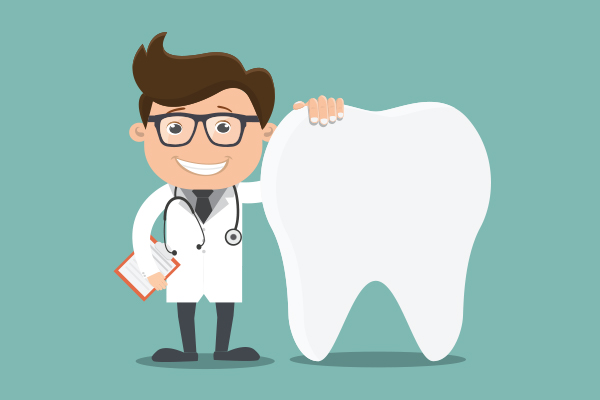General Dentistry — Types of Teeth: Incisors, Canines, Premolars and Molars

You have probably noticed that certain teeth have a different shape than others, but have you ever wondered what the purpose is for the different types of teeth?
Teeth are much more than an aesthetic property; they serve a very important role in our ability to function normally on a day-to-day basis.
Different types of teeth
All of our teeth serve an important role, and it is crucial to take proper care of them in order to chew, bite and tear in a normal manner.
There are four different types of teeth: incisors, canines, premolars and molars.
Incisors
The incisors are the most visible teeth in the human mouth, as they are the group of teeth in the very front. In total, each person has eight incisors: four on the bottom row and four on the top row.
While incisors may seem insignificant and only there to aid in appearance, they are just as important as every other type of teeth in the mouth. Incisors' main functions include biting into food and helping to pronounce words. In addition, incisors also help support the lip as well.
Canines
Canines are the four sharper, pointed teeth on each side of the incisors. Canines are very similar to incisors in that they also help with biting and tearing food.
Additionally, canines help guide the mouth closed when the upper and lower jaw come together. Without canines, eating harder foods, such as meat and hard fruits and vegetables, becomes much more challenging.
Canines generally come through around the age of nine or ten years of age, and the lower canines usually come through before the upper canines.
Premolars
Premolars, or bicuspids, are located behind the canines and in front of the molars. There are a total of eight premolars, with four being located on the bottom row of teeth and four located on the top row of teeth.
Premolars' main purpose is to chew and crush food, and they are sometimes used for tearing as well. Additionally, premolars help keep the shape of the face, and the absence of premolars can lead to a change in one’s appearance.
Premolars are typically very strong and are capable of enduring a large amount of pressure.
Molars
There are also eight molars (four on the bottom and upper row of teeth). Molars are very strong and are located in the farthest back part of the mouth. The main purpose of molars is to chew and crush food, and they are essential to eating in a normal manner.
Third molars, otherwise known as wisdom teeth, are also considered to be molars, although many separate wisdom teeth into their own category.
Since molars are exposed to much more jaw pressure than other teeth, it is important to protect them properly by practicing good oral hygiene and wearing a mouthguard at night if grinding teeth while asleep is a problem.
Request an appointment here: https://balmoraldentalcenter.com or call Balmoral Dental Center at (256) 429-3870 for an appointment in our Huntsville office.
Check out what others are saying about our services on Yelp: Read our Yelp reviews.
Related Posts
Your general dentist can perform cosmetic dental services. These treatments aim to enhance one’s smile and general appearance. They also keep gums and teeth healthy. The following are the cosmetic dental services your general dentist may offer.Dental misalignment can cause more oral issues like gum disease. A patient may get traditional braces or clear aligners,…
Curious about cosmetic dental services? Read on to learn more. Most people would like to have a pearly white, evenly aligned smile. However, cosmetic dental procedures can do more than simply make a patient's smile look better — these treatments also improve one's oral health and general well-being.The following are some of the effects that…
You will need cosmetic dental services if you have vampire teeth. These are pointed, sharp canine teeth. Seeing your general dentist will resolve the issue. Here are specific cosmetic dental services available to treat pointed canine teeth.Cosmetic dental services like tooth reshaping can trim down the canine teeth. This treatment changes the surface, shape, and…
A denture repair is needed when a set of dentures becomes damaged. Damage can occur from simply dropping the appliance or even eating something too hard that may produce a crack or fracture. However, almost always, a broken denture piece is unexpected, which can make the next step intimidating. Understanding what to do when a…


